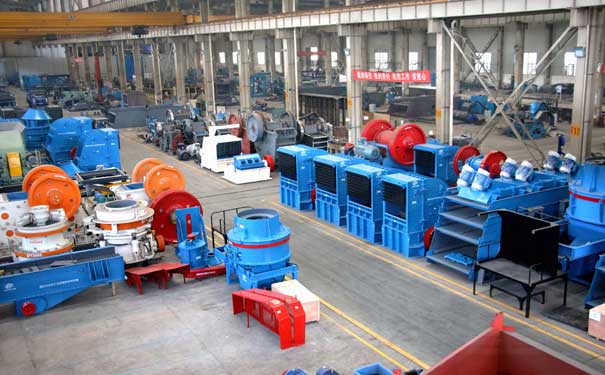Luoyang Dahua has repaired 20,000 tons of complete mineral processing machinery and equipment, invested 150 million yuan, equipped with eight-axis robots, digital machining centers, two-axis spindle box sets and other advanced equipment. The core equipment is laser cladding and additive manufacturing production line. After the project is put into production, it is estimated that the annual output value will increase by more than 50 million yuan, and at least 200 people will be employed.
There are two kinds of parts in the production workshop of Luoyang Dahua, a kind of new and bright, a kind of "grey face". From the latter to the former, the process that needs to be experienced is called remanufacturing. This is a technology for repairing and reprocessing blanks from used parts, which can fully exploit the added value of waste products. After using a number of high-tech, the performance of remanufactured products can reach or exceed new products.
As a mining machinery manufacturing enterprise, Luoyang Dahua has focused on transformation and upgrading in recent years, and remanufacturing is the main direction. This year, with the investment in the laser cladding additive manufacturing line, the company's attempt in the remanufacturing field has been upgraded to “re-intelligence”.
As one of the dazzling "stars" in the remanufacturing field, the laser cladding additive manufacturing technology is simply a magical light for outsiders – only two staff members wearing protective equipment after data entry, after a few minutes “Warm-up, the blue forearm of Yaskawa robot began to produce a dazzling light. The surface of the worn and damaged parts was gradually irradiated with a layer of "outerwear" with excellent performance under the laser beam, which became shiny, and achieve "rebirth”.
Mr. Dong, the project leader, said that compared with the traditional remanufacturing process, the laser cladding additive manufacturing technology has the advantages of small heat input deformation and high density of deposited layer structure. At the same time, through the use of intelligent robots, the production efficiency is also large. This technology only takes 3 to 4 hours to treat 1 square meter surface, and does not damage the material structure of the product, which is equivalent to carrying out a "minimally invasive" operation on the waste products, and achieves the purpose of additive manufacturing, wear resistance, corrosion resistance and high temperature resistance. According to statistics, the production cost of the products manufactured by this technology does not exceed 50% of the prototype new products, and can achieve energy saving of about 60% and material saving of about 70%.
In the next step, the company will extend the chain and strengthen its remanufacturing technology and develop the robot field, striving to make new breakthroughs in the transformation and upgrading of the manufacturing industry.

